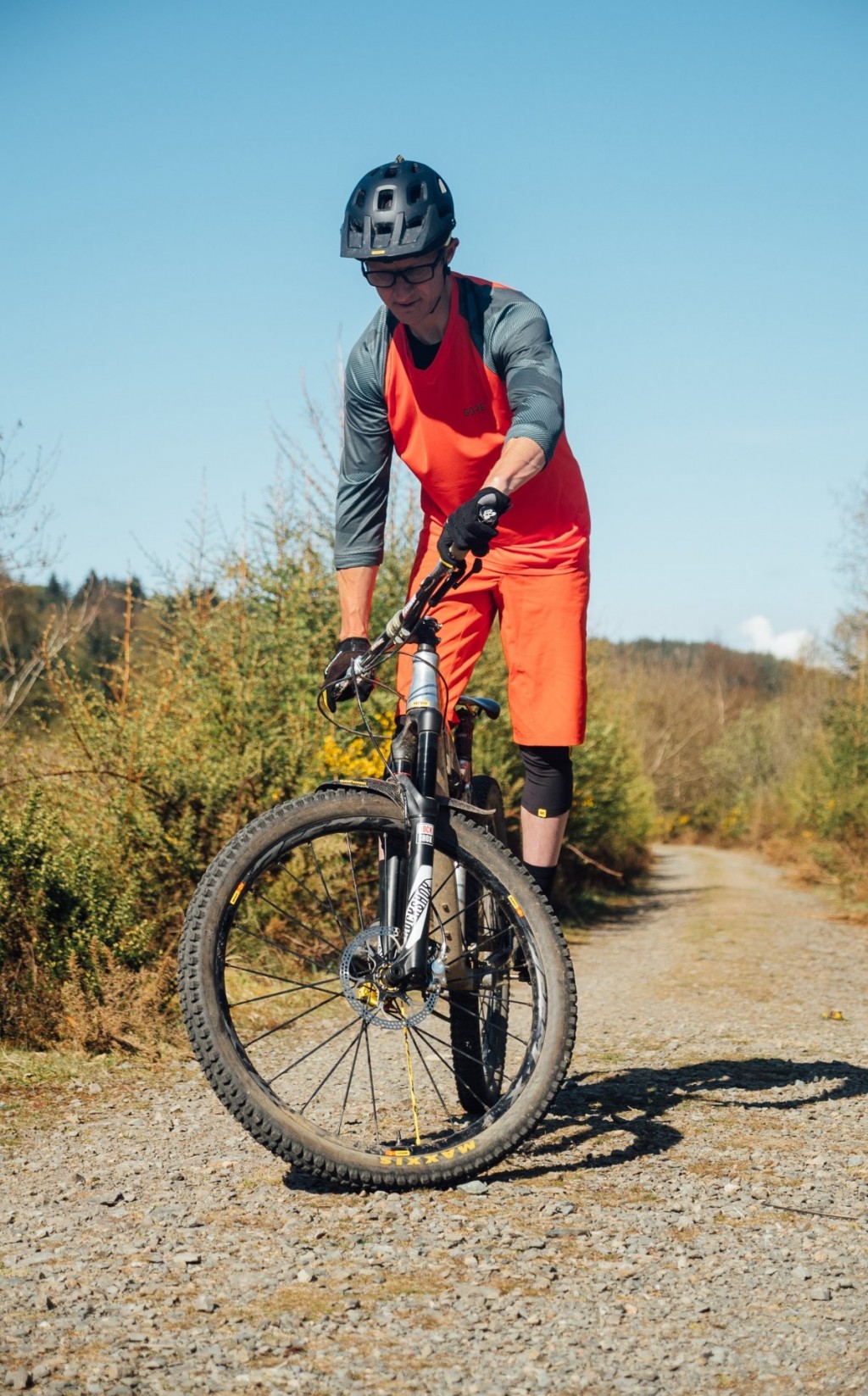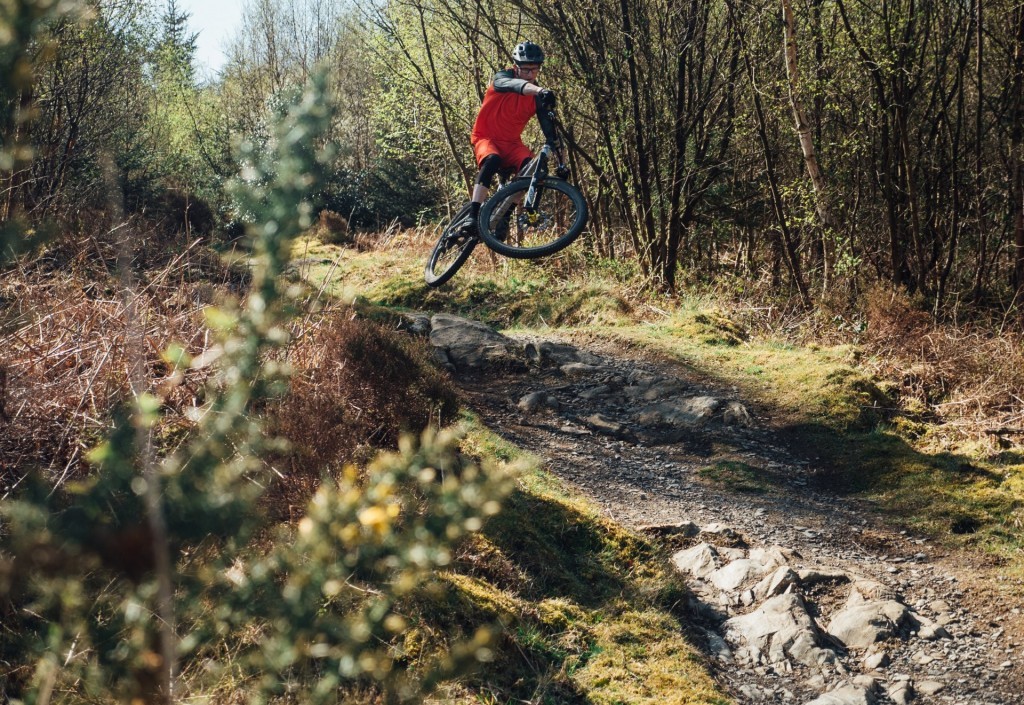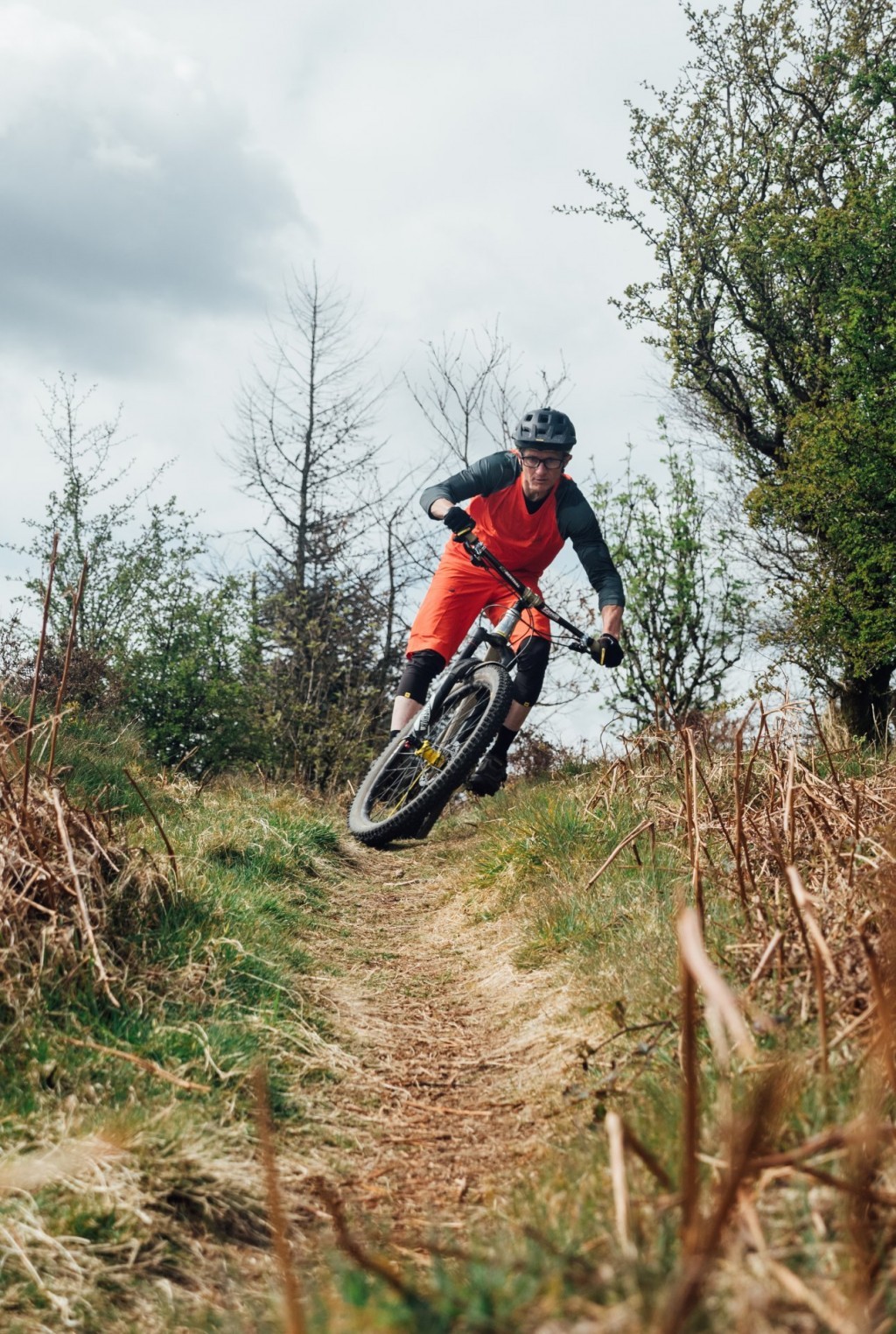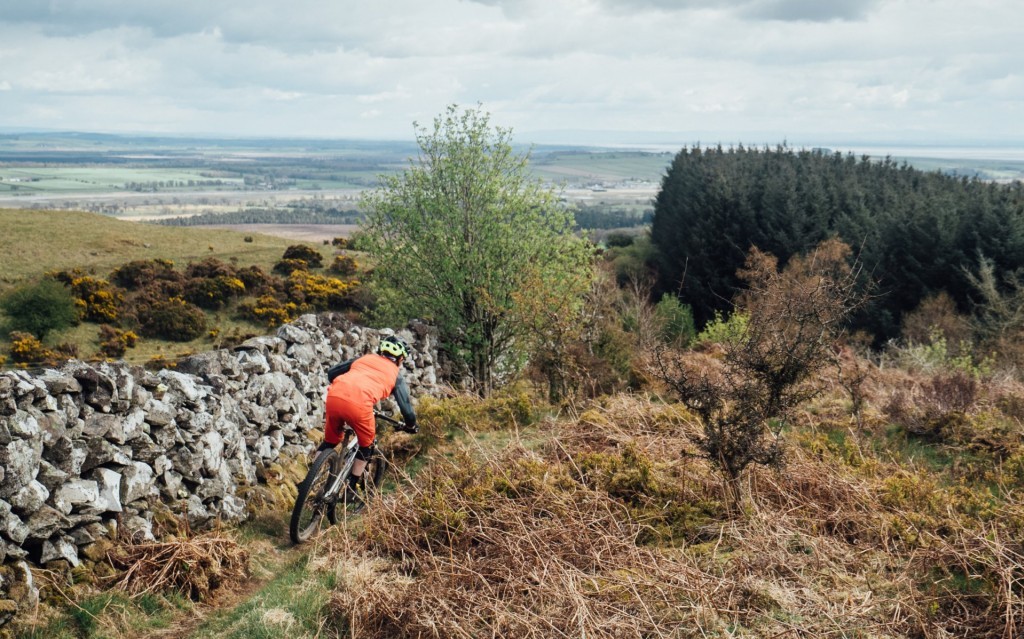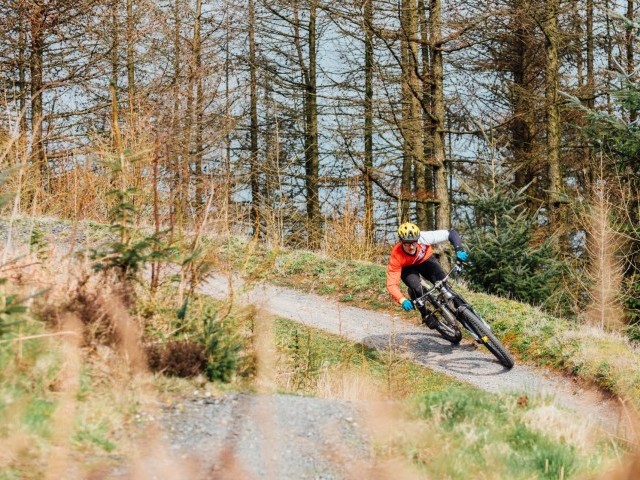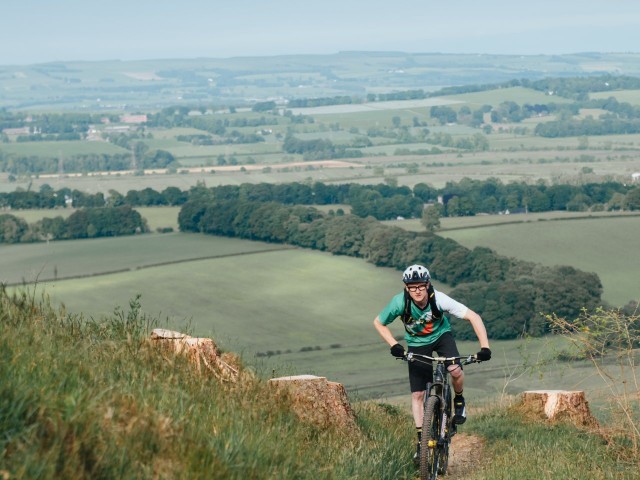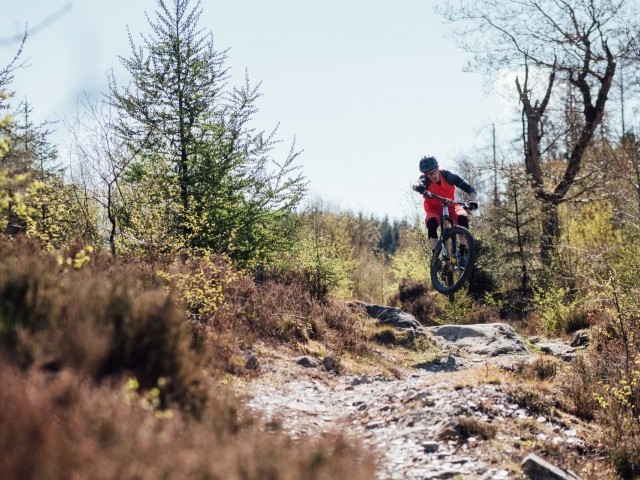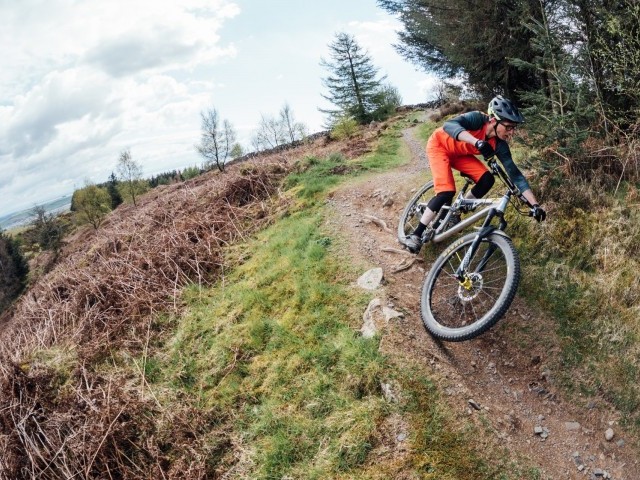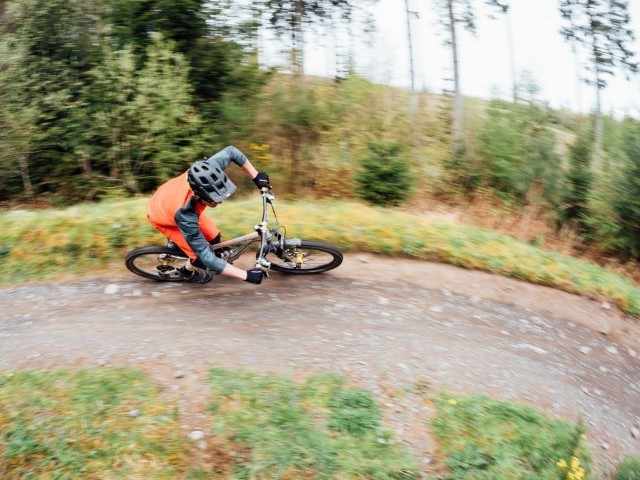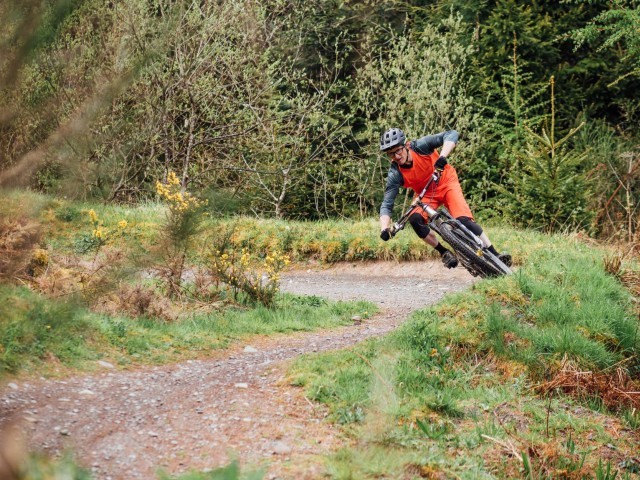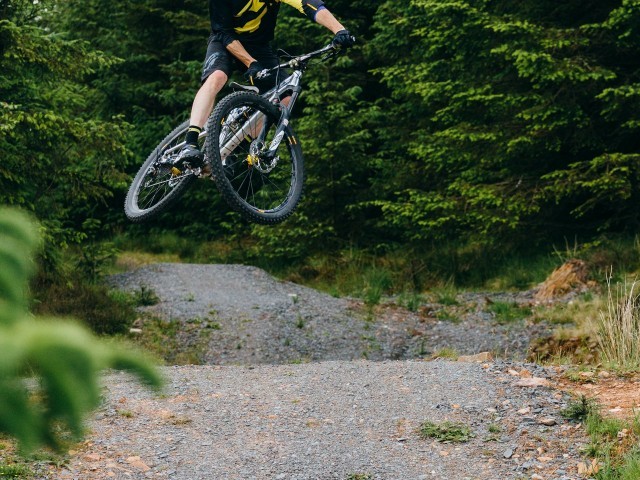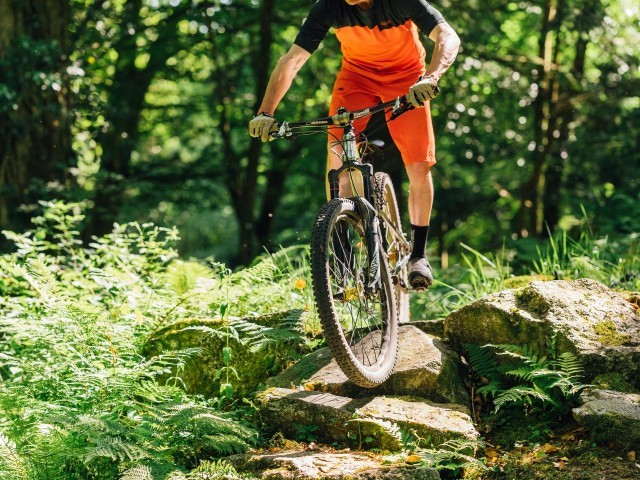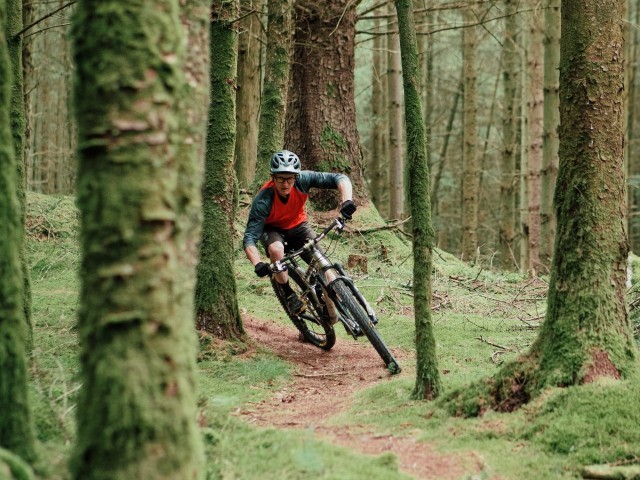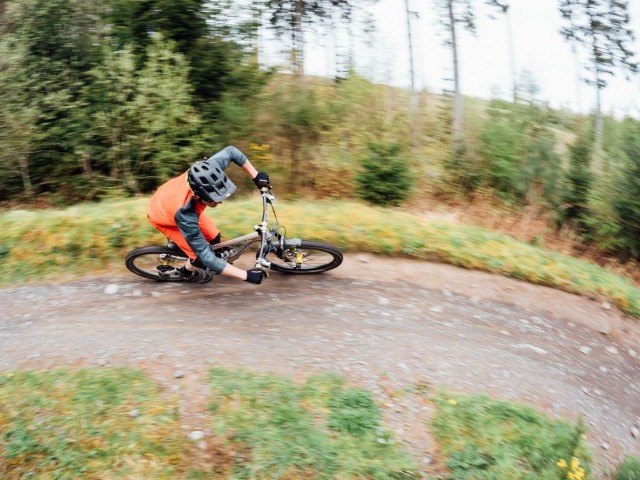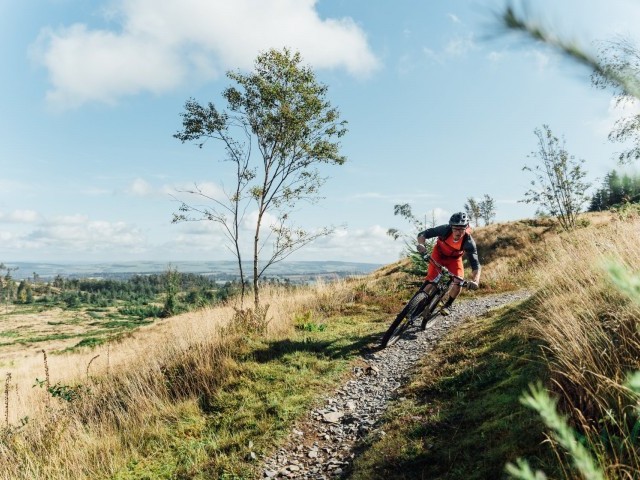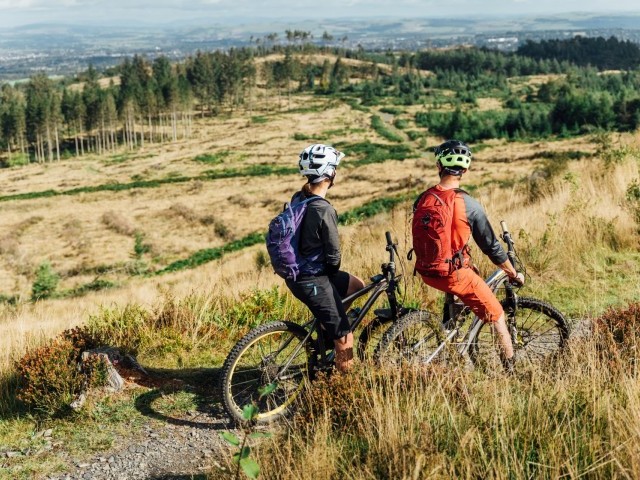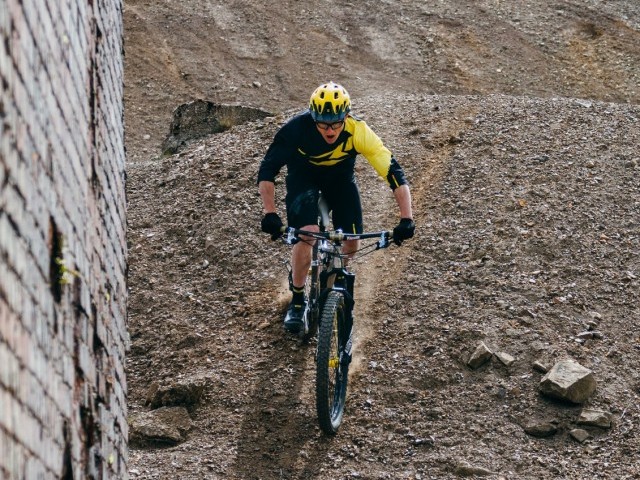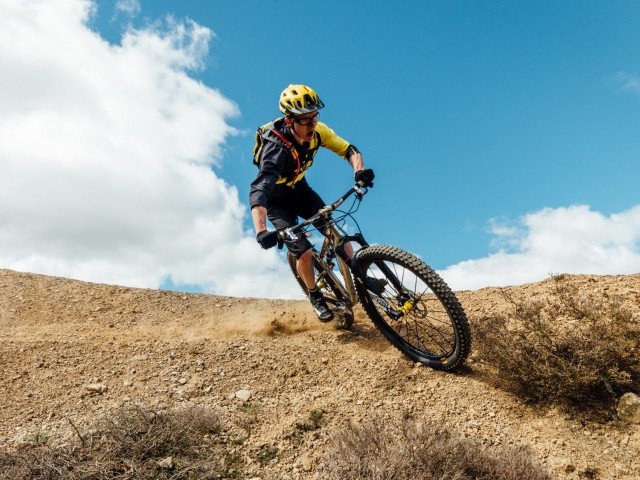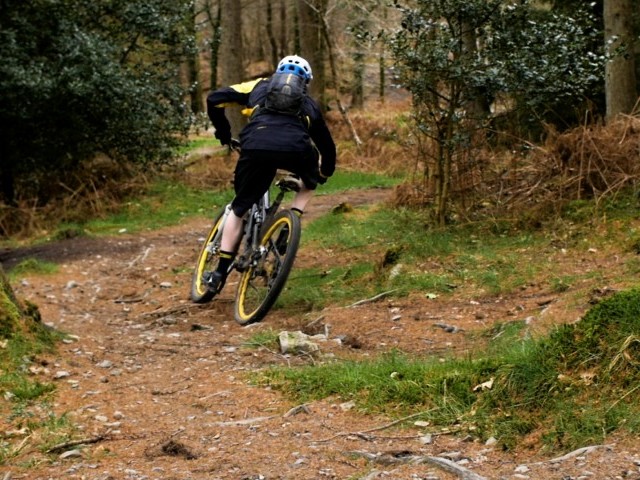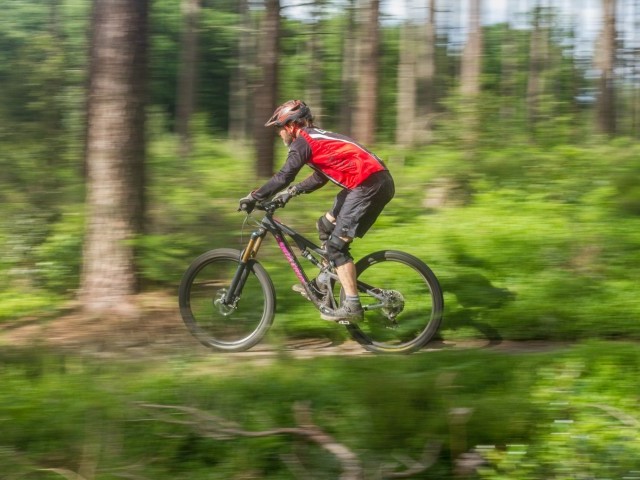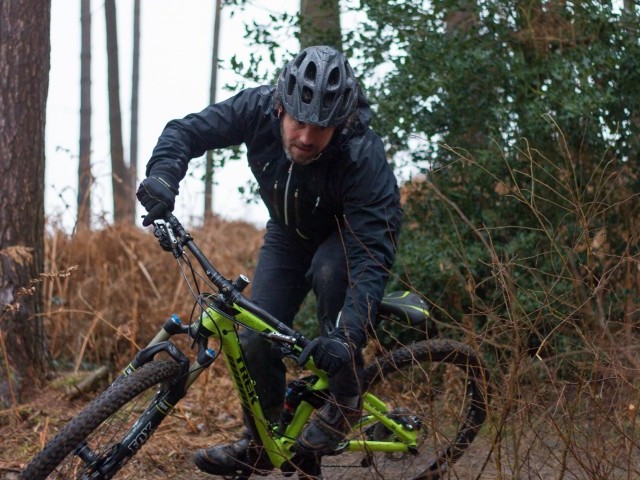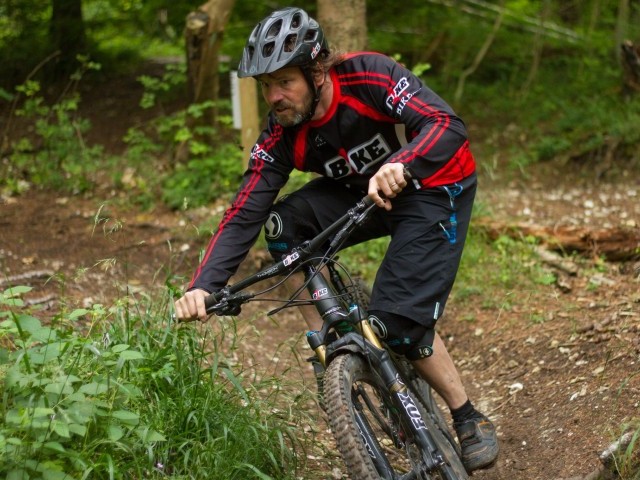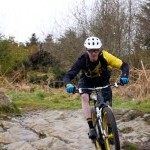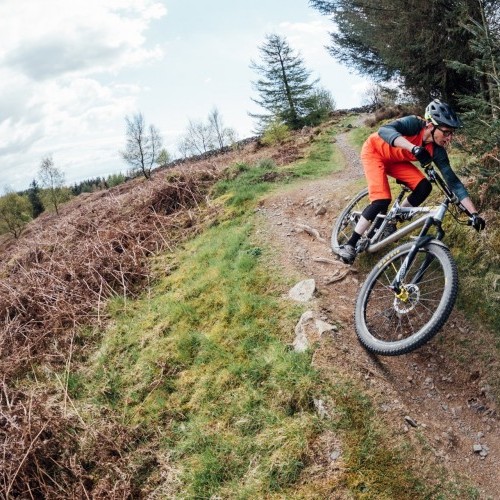
Looks Like a Session
Technique / Psychological
Practice makes permanent
Skills on demand and the ability to make the bike dance down the trail are not so much about perfecting things, it's more a matter of embedding subconscious memory (connections in the brain) and muscle memory within ourselves, making a permanent connection so that we can make the correct shapes at the correct times. With the core skills permanently embedded in our minds and bodies we can start to take on more challenging line choices and more technical trails, in dire situations where wheels slide out or we over-rotate then it is thanks to deep-rooted connections that we can make all the rights shapes at the right time to get the bike back under control. So with that in mind, let the session begin.
We've heard it all before, “practice makes perfect”, but this is not necessarily the case, often with this in mind, we end up doing nothing more than setting ourselves up for failure. In the sports psychology circles, this is a known factor and leaves professional sportspeople and coaches with a conundrum. How do we set goals and targets without raising the bar too high and thus opening up the potential for falling short of the mark. This falling short can lead to ongoing performance anxiety and stress within an athlete which is no good, results suffer and individuals mental health and personal lives suffer as a consequence. Most people perform better when they are relaxed, natural talent comes to the fore, sure some people will tell you that they thrive in pressure situations but they are very much in the minority. Many people suffer from performance anxiety, any of you who've flunked exams and fallen short of the mark in pressured environments like interviews will be well aware of what I’m talking about.
So when it comes to our riding which is typically done for recreation why should we be considering performance and setting ourselves goals and markers? This really is an open-ended question, for some of you there will be the desire to improve (hence you are this feature A category readers) but for others (and thank you for tuning in if this is you, I’ll call you our B group) you will have reached a level of contentment. If you are in the ‘A’ category then one way we can help improve your skills and technique is through the process of sessioning, forcing yourself to commit to certain shapes/features in the trail and repeating the process many times over. This puts your mind in a state of deep concentration, from practising simple things that you are already capable of doing to introducing more complex situations, the process engrains memory into the muscles of which the brain is one. The brain makes new connections and consolidates them, the muscles in the remainder of the body become tuned to the task, strong, supple and able to repeat at will.
Sessioning is just another word for practising. Everybody can benefit from more practice, even the world’s elite. If you've read previous features there is a common theme here, mixing up your rides and having a variety to your mountain biking simply doesn't have any downsides. No matter what type of riding you do diversify and do other styles of riding, you will only improve that one particular discipline that you hold nearest and dearest. Let's say you just enjoy going down the local jumps and throwing shapes through a series of tombstones and rhythm sections. How many runs can you do before you have to stop to take a break? Now let’s say that every now and again you went for a longer ride, what would the outcome be? Your cardiovascular would improve, your leg strength would improve, your upper body strength will improve. This overall improvement in fitness/performance will enable you to do more runs through the dirt jumps, simply put, doing more of what you like.
Here’s another example, let's say you just like riding easy tracks and trails and you're not at all fussed about getting air under your wheels. In this example by taking some time out from doing those longer easier non-technical rides and practising some simple core skill drills, the ones that don't involve getting air under wheels, such as cornering and track stands your rides will inevitably be enhanced. In this instance you will engage different muscles, you will even get a cardiovascular workout as you lap up a section of trail to do repeat runs on a corner, lots of stop-start activity will burn energy, the biggest drain on the tank is going from zero cadence to driving the cranks round for the first few spins, this builds strength unlike just simply spinning away. The byproduct of this is that by working different muscle groups (in particular your core) you will feel less fatigued from the small bumps and knocks that you get on your long rides, you may even tap into ranges of movement that help you save the bike in an impromptu slide.
Of course, some disciplines will benefit more than others from the process of sessioning, if you practice downhill, street riding, jumping, enduro or trail riding you will see a big improvement in your riding by mixing things up. To repeat the shapes we make on the bike we need to be physically fit, just to lift and move the weight of the bike around we need a level of fitness and strength. Short intense rides will help us build our cardiovascular capacity and speed, you will engage your fast-twitch response in your muscles, these are needed for explosive manoeuvres and the cardiovascular is needed to recover from such manoeuvres.
Longer slower rides help with recovery, everything we do in mountain biking is a process of making an effort then having to recover in order to make repeated efforts. Sectioning trail and sessioning features within a trail will inevitably give you a workout, typically you are doing short runs through a passage, stopping and starting, accelerating from zero and inevitably engaging the upper body making shapes, skills like the wheelie, manual, hop, drop or jumping the bike engage many muscles throughout the whole body. Even a simple short session can leave you feeling like you've been out on an all-day epic.
So let me give you some examples of simple sessions that you can set up, we're talking about the classic car park skills drills, jumpers for goalposts stuff. These easy skills drills can be done whilst waiting for your buddies to get ready, or if your mid-ride and someone is faffing around then rather than sit and get cold you can engage in some basic skills drills.
From track standing you can start to work against the brakes, compressing and rebounding to lift the rear wheel, then move on to tapping the cranks to lift the front wheel. You can put in a small sideways hop from a static position, and you can start to turn the bike by pivoting off of the rear wheel and the front wheel, alternating between the two, working the bars and kicking across with your feet. You can lay out a basic slalom course and practice your cornering technique, place some small movable objects on the floor and practice lifting the front wheel over with a manual, then the rear wheel with a simple rear-wheel lift before progressing onto bunny hopping the object.
From some basic skills drills when you move onto the trail proper you can pick a section that will require you to deploy a wheelie to get the front wheel up onto a feature (a small rock ledge, a root, etc). Once you have mastered the timing of the crank and the front wheel is getting up onto the feature with ease, then you can bring in the rear wheel lift to get the back end up onto the feature. Try changing your line on the way into and on the exit to the feature, by adding some tight turns you force yourself to sharpen up your timing and work your core balance.
For features that have a steep grade and do not require you to get air under the wheel but will still stall the bike then you need to focus on vision and body position, stand as you power through the feature and look up beyond the feature as you ride through it. Each time you turn around and descend back down the trail to repeat this section you can practice your drop-off technique, from the rolling press-drop to the punch-drop, you can even slow right down and use the wheelie-drop.
Inevitably you will come across a corner or a sequence of corners, choose a start point backup up the trail and make a note of your gear selection, accelerate towards the corners and focus on your vision, your speed control, and your footwork as you ride through the corners. Experiment with different line choices, remember there are two optimum choices for you to take, the one that feels sweet, and if you are racing the one that is fastest on the clock. If you are not in a competitive environment then go for the line that feels the nicest. Just by walking back through the section, you will notice lines that you have never previously ridden, even if you ride the trails day in day out! Think about how you turn around each time at the start and at the end of your section, if there is room to swing the bike around then you can bring a small power wheelie into the exit of your turn, this will help to bring the front wheel back online. If the trail is very narrow with limited space and you're ready to start really pushing things you can practice the endo pivot turn, some people refer to this as a nose press. This skill is really very useful in tight terrain, it helps you set up for features that follow tight corners, in tight Alpine style switchbacks it is an essential skill and one that should be mastered in less exposed environments of which a simple session can give us.
A particular technique that is often overlooked and quite hard to isolate in a session is breaking. How many times have you found yourself locking up a wheel, or dragging the brakes too much in a corner? By choosing a suitably steep gradient and trying to roll down it as slow as you possibly can without locking up a wheel you force yourself to focus on how much pressure you are applying to the brake lever, you will inevitably lower yourself into the centre of the bike (don’t for one minute think that you should be poking your bum out the back and hanging off the back of the bike as some of your friends may suggest). In addition to bending at the knees dropping down into the centre of the bike, you will drop your heels forcing the rear wheel into the trail even more. Your wrists will dip slightly as you stay behind the bar pushing the front-end away from you, and against the resistance of the brake. Should a wheel slide or lock-up then ease the pressure on the brakes, regain control and reapply pressure evenly between the front and rear brake. If you can find a relatively steep banking in a relatively safe environment you can practice traversing the bank, additionally you can put turns in whilst descending down the bank.
Jumping might not be everyone's cuppa tea but for those of you who want to progress onto bigger and more technically challenging features then a good place to start is either your local pump or BMX track, avoid the temptation of sending yourself straight into gap jumps or those shonky built mini kickers built by the kids (and big kids alike). ‘Proper’ jumps are fastidiously crafted by masters of the art, either paid professionals or motivated movers of earth who themselves act as test pilots and R&D department.
Small features and uneven shapes have a tendency to buck and kick the bike, their small scale may look all too tempting but be aware, small features are the ones responsible for big accidents. Well crafted proven jumps allow you to build confidence, pump tracks and BMX tracks give you the chance to repeat a jump shape, their construction means that they ride pretty much the same time and time again, unlike their ugly cousins whose shape changes more rapidly from use and exposure to the elements.
You don’t have to go very far to find shapes and features common to the trail to get some practice on. Simple features can still offer almost endless opportunities for creative lines. When you are out on rides and you come across that tricky section try to get in the habit of giving it three or four attempts before moving on along the trail. Stick at it and when things become easy take a moment to think about a new way to make them difficult again.
We hope our words, images and video inspire the session, power to ya pedals folks, see you next time.
This technique article was in Issue 65 of IMB.
Related
By Clive Forth
Clive Forth is a rider who has been there, done that, got the t-shirt and cleaned his bike with it. He has grown with the UK scene and technological developments for the last 30 years and has competed at all levels in all disciplines riding for some prestigious brands along the way. Always looking for that extra edge with endless passion and drive he is geared up to bring you the inside line on all aspects of mountain biking skills and technique.




